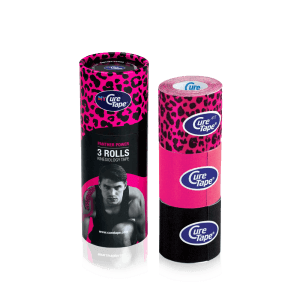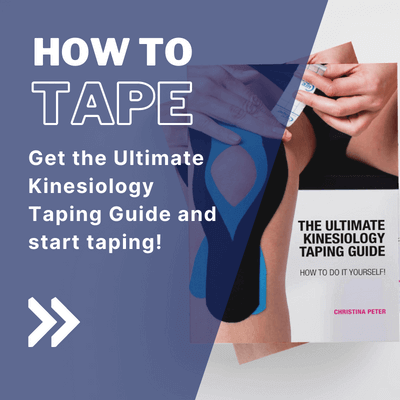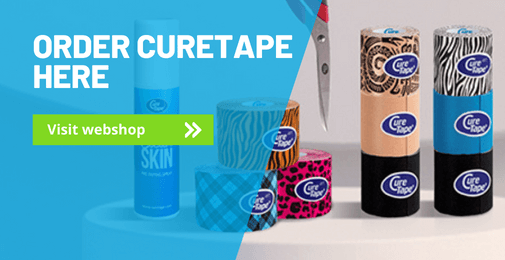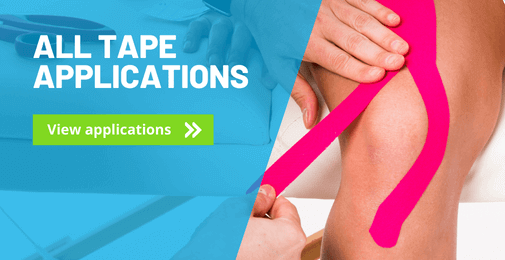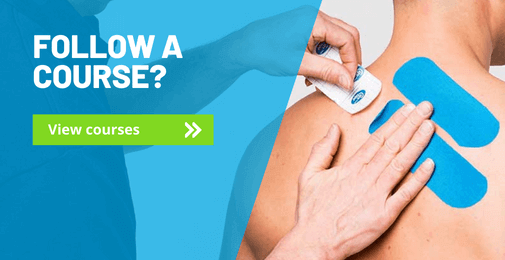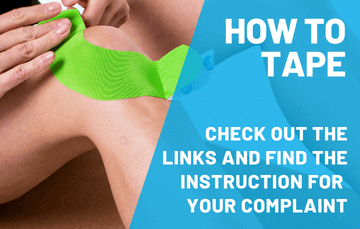How to tape Osgood-Schlatter
Tips for a good knee taping application
- Is the cause of the complaint or pain clear?
- Check if there any contraindications for not taping.
- Before you start taping, carefully read the instructions.
- Choose a colour of tape, any colour that fits your mood!
- Round of all the edges to prevent peeling.
- Do not stretch the tape at the beginning and the end.
- Rub the tape well for adhesion. Heat activates the adhesive layer.
- Showering or swimming is possible, pat the tape dry after it gets wet. Do not rub it hard.
- It is easier to remove the tape with body or massage oil.

Christina’s advice when taping your knee
In the self-taping instructions, I have chosen taping applications that are easy to apply yourself. In order to make this treatment safe, I give practical tips, which you should take into account before, during and after a tape treatment. They are based on my years of practical experience. If the complaints persist, always consult a therapist or doctor.
Preparation for taping Osgood-Schlatter
Tape
Shape: I-Tapes.
Number of strips: 4 of 2.5 cm wide. Cut a roll of tape in half lengthwise or get these pre-cut 2.5cm rolls.
Technique: Ligament technique (maximum/full stretch).
Measuring and cutting the tape:
Step 1:
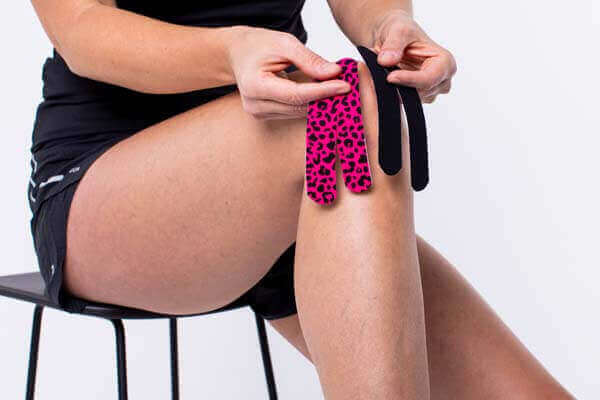
- Sit in a position where you can easily treat the pain point.
- Measure the desired length of tape. Cut the 5cm tape in half to create a strip 2.5cm wide. Cut it about 5cm shorter than what you measured. The tape will automatically get longer by the maximum stretch you will use on the middle active part.
Applying the tape on the knee
Step 1:
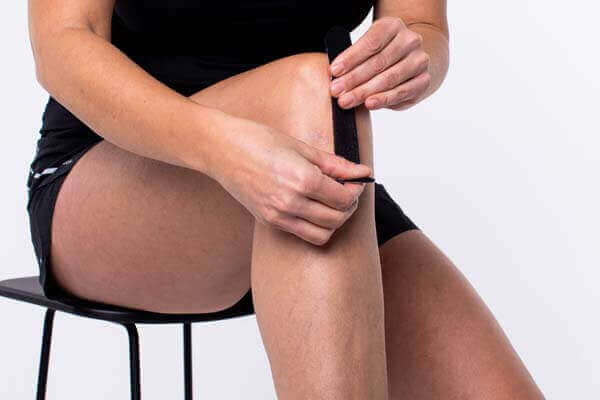
Step 2:
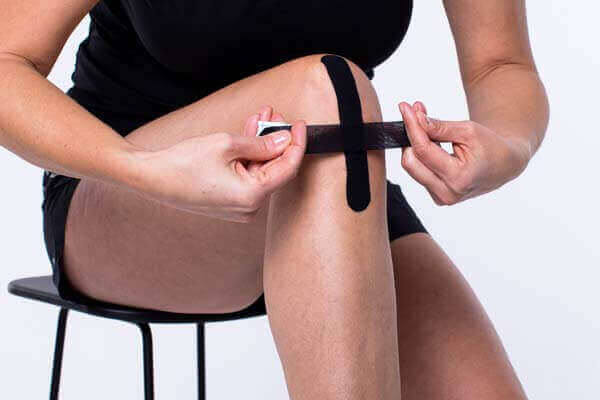
Step 3:
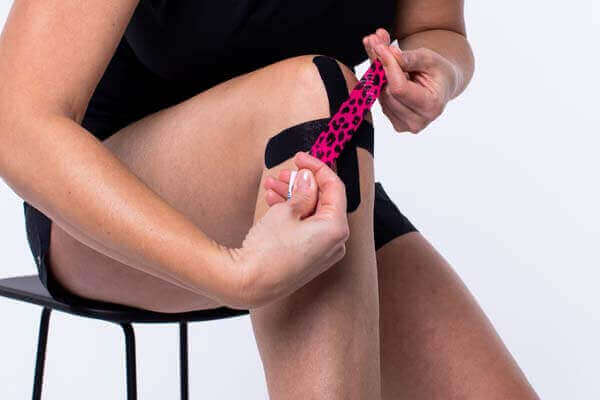
Step 4:
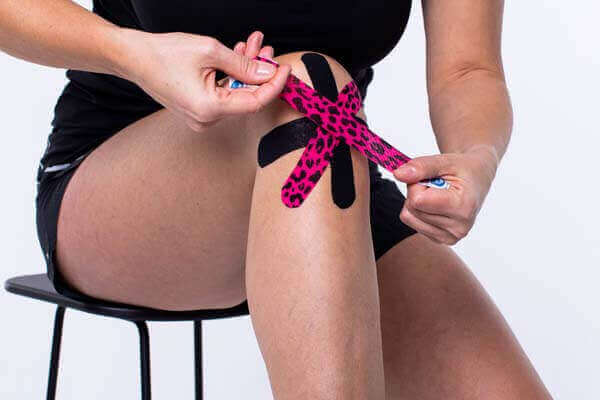
Step 5:
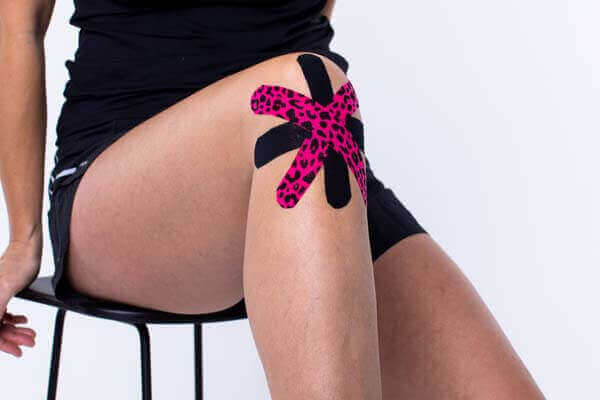
- Bring the pain point into a stretched starting position.
- Tear the release paper from the first tape in the middle and fold the paper to the right and left. Then bring the middle section to maximum stretch, by pulling the tape apart.
- Now gently place the first strip of tape, with maximum stretch, on the pain point. Gently press the tape and then apply the two anchor ends without stretch. Rub the tape well so that it adheres better.
- Apply the second tape in the same way, at right angles over the first tape so that it forms a cross.
- Place tape numbers three and four diagonally across the centre of the first two tapes.
Popular products to tape your foot
-
MYCureTape® – 3 Rolls Kinesiology Tape – Value Pack
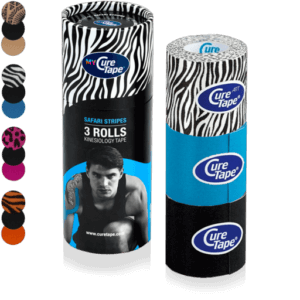 $26.95
In stockSelect options This product has multiple variants. The options may be chosen on the product page
$26.95
In stockSelect options This product has multiple variants. The options may be chosen on the product page -
Book: The Ultimate Kinesiology Taping Guide
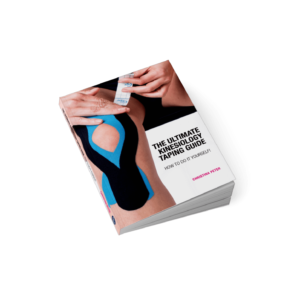 $29.95
In stockAdd to cart
$29.95
In stockAdd to cart -
CureTape® Ultimate Self-Tape Starter Kit
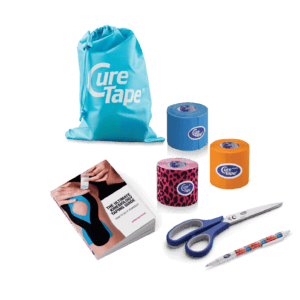 $87.95
Out of stockRead more
$87.95
Out of stockRead more
Learn how to tape
Want to learn how to apply tape yourself*? We have created the ultimate guide for that! This helpful guide contains:
- 30 taping instructions for common injuries that taping can help you with
- 176 pages of clear written instructions
- 200 step-by-step instructions accompanied by photo’s, illustrations and scannable video’s through QR codes
What are you waiting for? Order your copy today!
*This book is intended for people who want to tape an injury or complaint themselves. If uncertain about the complaint, consult a physiotherapist.
THYSOL is the manufacturer of the kinesiology tape brand CureTape. As CureTape, we have been training and supplying professionals for almost 25 years. And consumers now know how to find us too! By manufacturing all our tapes in our own factory, we can guarantee the best quality!
Please note that the indicated tape applications and information on our website about the possibilities with kinesiology tape have not yet been scientifically proven. The statements and examples mentioned are based on long-term experiences of patients and trained therapists.Contraindications not to tape: pregnancy, open wounds, broken bones, unexplained complaints, allergies and skin diseases, use of medication such as blood thinners, thrombosis and fever. Always apply tape in consultation with a specialist.

